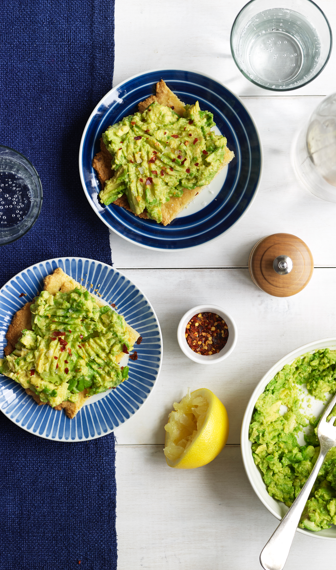You have undoubtedly heard all about high cholesterol and high LDL levels and their relationship to increased risk factors for heart. But another important—and insidious—factor for heart disease is inflammation. In simple terms, inflammation is a catchall word that encompasses the processes by which your body protects you from unfamiliar and potentially damaging substances. One example of your inflammatory response at work is the release of antihistamines in response to an insect bite. This stimulates capillaries in the area to dilate, pooling blood. The increased blood circulation encourages healing, but all you are aware of is red swelling that probably itches or throbs.
Unchecked Inflammation
As part of your body’s natural defense system, a certain amount of inflammation is healthy, especially when it responds to infection, irritation or injury. But once the battle has been fought, inflammation should return to normal levels. Unlike the swelling around a bug bit or the bruise resulting from a fall, you cannot see the inflammation that may be impacting your heart health. Fortunately, there is a way to detect its presence in the early phases of heart disease. Elevated levels of C-reactive protein (CRP) are a marker for unchecked inflammation. It is now understood to be one of the best predictors of future heart problems.
Diet and Inflammation
When inflammation stays elevated because of a repeated insult to the body, such as a poor diet, it spells bad news. Researchers now appreciate the importance of this ongoing low-grade condition in contributing to many chronic health problems, including diabetes, heart disease and even cancer. We typically think of inflammation with respect to fighting off bacteria and viruses. However, other substances, including excess carbohydrates and trans fats, can contribute to inflammation. A single high-carbohydrate meal can lead to increased inflammation.(1, 2) Over time, eating a high-carbohydrate diet can lead to increased markers of inflammation.(3, 4)
What about low-carbohydrate diets? Levels of CRP, a marker for inflammation, have been shown to decrease by approximately one-third on the Atkins Diet.(5, 6) In subjects with higher levels of inflammation, CRP levels decreased more in response to a low-carbohydrate diet than to a fat-restricted diet.(7) A recently published study compared subjects with metabolic syndrome (insulin resistance) on a low-fat diet to those who were consuming a very-low-carbohydrate diet. The low-carb group showed a greater decrease in circulating inflammatory markers compared to the low-fat group.(8) These data implicate dietary carbohydrate rather than fat as a more significant nutritional factor contributing to inflammation, although the combination of both increased fat and a high carbohydrate intake may be particularly harmful.
Omega-3 Fats Also Counter Inflammation
The anti-inflammatory effects of the omega-3 fats EPA and DHA have been shown in cell culture and animal studies, as well as in trials using humans.(9) These effects partially explain why these fats appear to have widespread health-promoting effects, especially in reducing the risk of heart disease and diabetes. Several hundred studies have demonstrated the cardioprotective effects of fish oil.(10) That’s why in addition to following the Atkins Diet, which restricts overall carbohydrate consumption and focuses on whole food sources of carbohydrates rather than processed foods made with white flour, sugar and other refined carbohydrates, we recommend regular consumption of fatty fish or use of a supplement containing EPA and DHA.
References:
- 1. A. Aljada, J. Friedman, H. Ghanim, P. Mohanty, D. Hofmeyer, A. Chaudhuri, et al., “Glucose Ingestion Induces an Increase in Intranuclear Nuclear Factor ĸb, a Fall in Cellular Inhibitor ĸb, and an Increase in Tumor Necrosis Factor Alpha Messenger RNA by Mononuclear Cells in Healthy Human Subjects,” Metabolism55 (2006), 1177–1185.
- 2. P. Mohanty, W. Hamouda, R. Garg, A. Aljada, H. Ghanim, and P. Dandona, “Glucose Challenge Stimulates Reactive Oxygen Species (ROS) Generation by Leucocytes,” Journal of Clinical Endocrinology & Metabolism 85 (2000), 2970–2973.
- 3. S. E. Kasim-Karakas, A. Tsodikov, U. Singh, and I. Jialal., “Responses of Inflammatory Markers to a Low-Fat, High-Carbohydrate Diet: Effects of Energy Intake,” American Journal of Clinical Nutrition 83 (2006), 774–779.
- 4. S. Liu, J. E. Manson, J. E. Buring, M. J. Stampfer, W. C. Willett, and P. M. Ridker, “Relation between a Diet with a High Glycemic Load and Plasma Concentrations of High-Sensitivity C-reactive Protein in Middle-Aged Women,”American Journal of Clinical Nutrition 75 (2002), 492–498.
- 5. M. L. Dansinger, J. A. Gleason, J. L. Griffith, H. P. Selker, and E. J. Schaefer, “Comparison of the Atkins, Ornish, Weight Watchers, and Zone Diets for Weight Loss and Heart Disease Risk Reduction: A Randomized Trial,” The Journal of the American Medical Association 293 (2005), 43–53.
- 6. K. A. McAuley, C. M. Hopkins, K. J. Smith, R. T. McLay, S. M. Williams, R. W. Taylor, et al., “Comparison of High-Fat and High-Protein Diets with a High-Carbohydrate Diet in Insulin-Resistant Obese Women,” Diabetologia 48 (2005), 8–16.
- 7. P. Seshadri, N. Iqbal, L. Stern, M. Williams, K. L. Chicano, D. A. Daily, et al., “A Randomized Study Comparing the Effects of a Low-Carbohydrate Diet and a Conventional Diet on Lipoprotein Subfractions and C-reactive Protein Levels in Patients with Severe Obesity,” The American Journal of Medicine 117 (2004), 398–405.
- 8. C. E. Forsythe, S. D. Phinney, M. L. Fernandez, E. E. Quann, R. J. Wood, D. M. Bibus, et al., “Comparison of Low Fat and Low Carbohydrate Diets on Circulating Fatty Acid Composition and Markers of Inflammation,” Lipids 43 (2008), 65–77.
- 9. P. C. Calder, “Polyunsaturated Fatty Acids and Inflammation,” Prostaglandins, Leukotrienes and Essential Fatty Acids 75 (2006), 197–202.
- 10. T. A. Jacobson, “Secondary Prevention of Coronary Artery Disease with Omega-3 Fatty Acids,” American Journal of Cardiology 98 (2006), 61i–70i.

